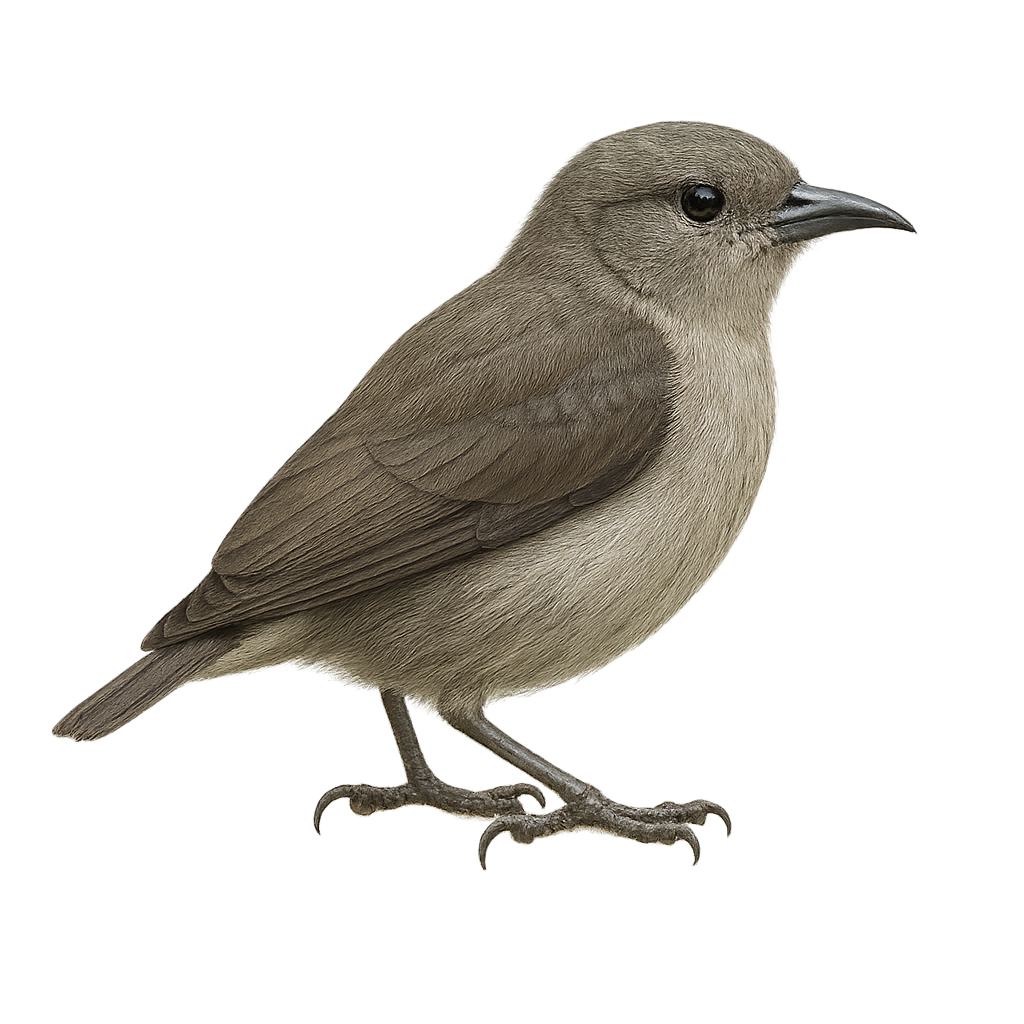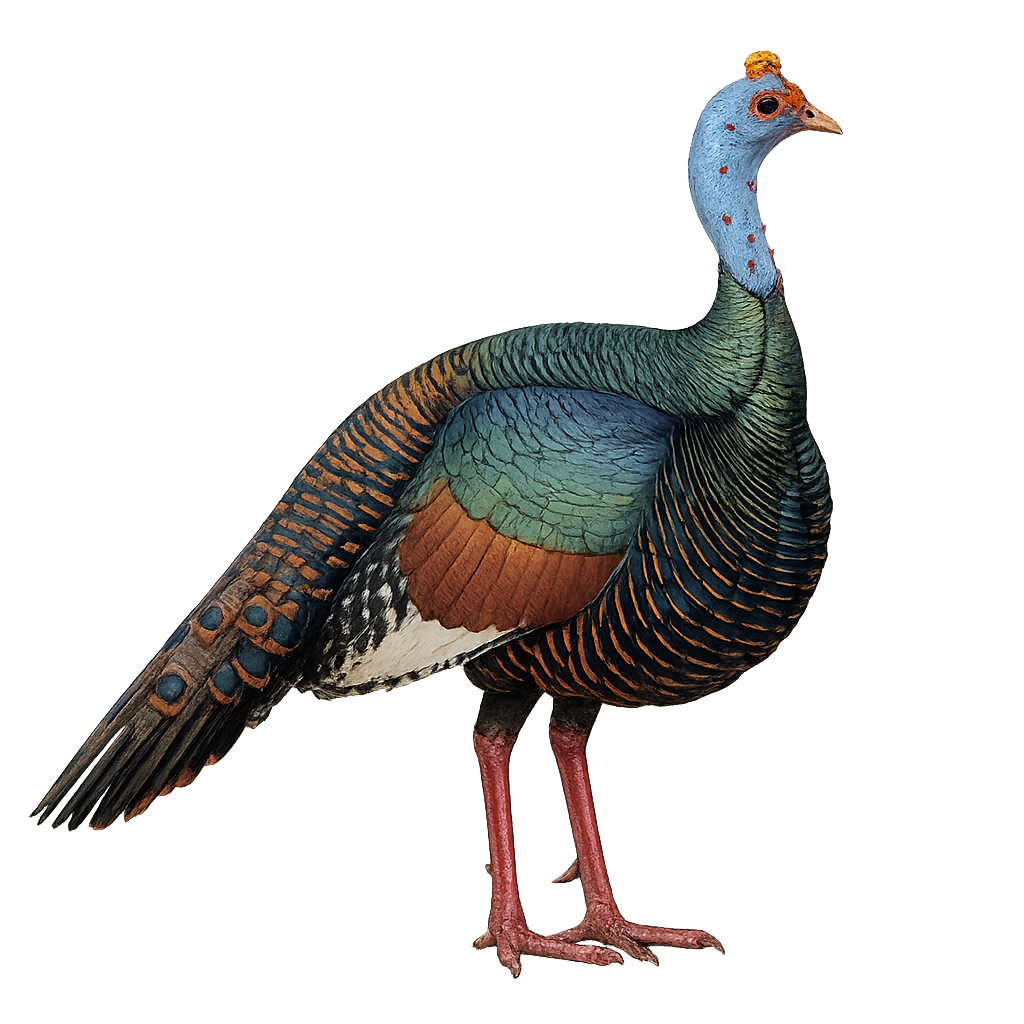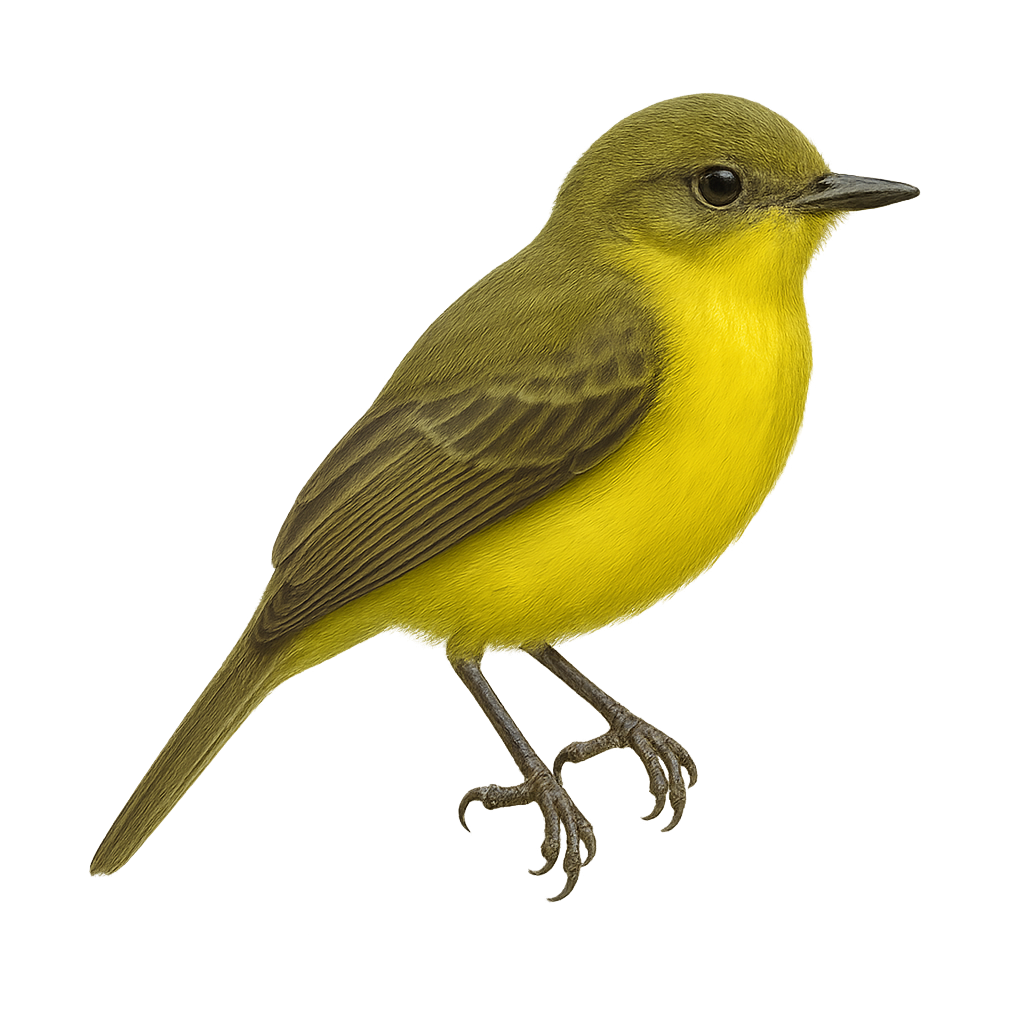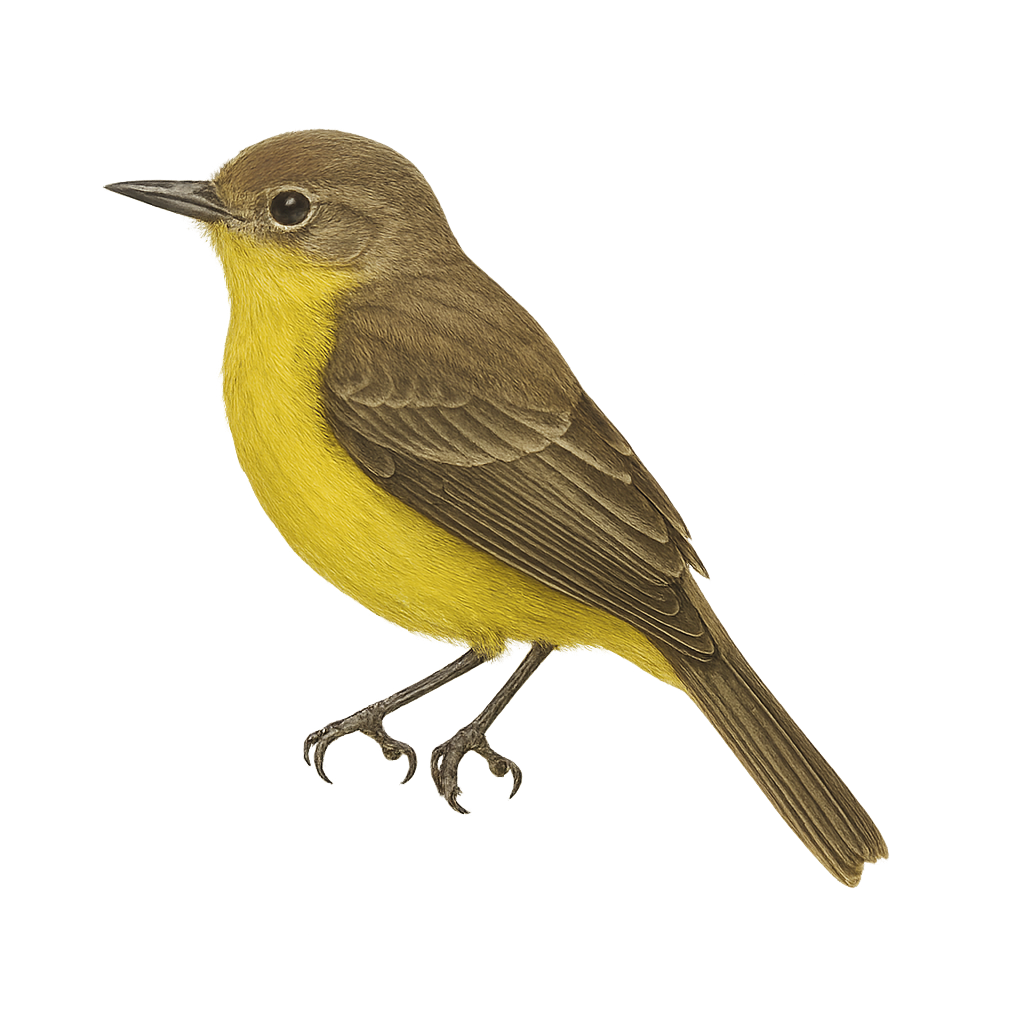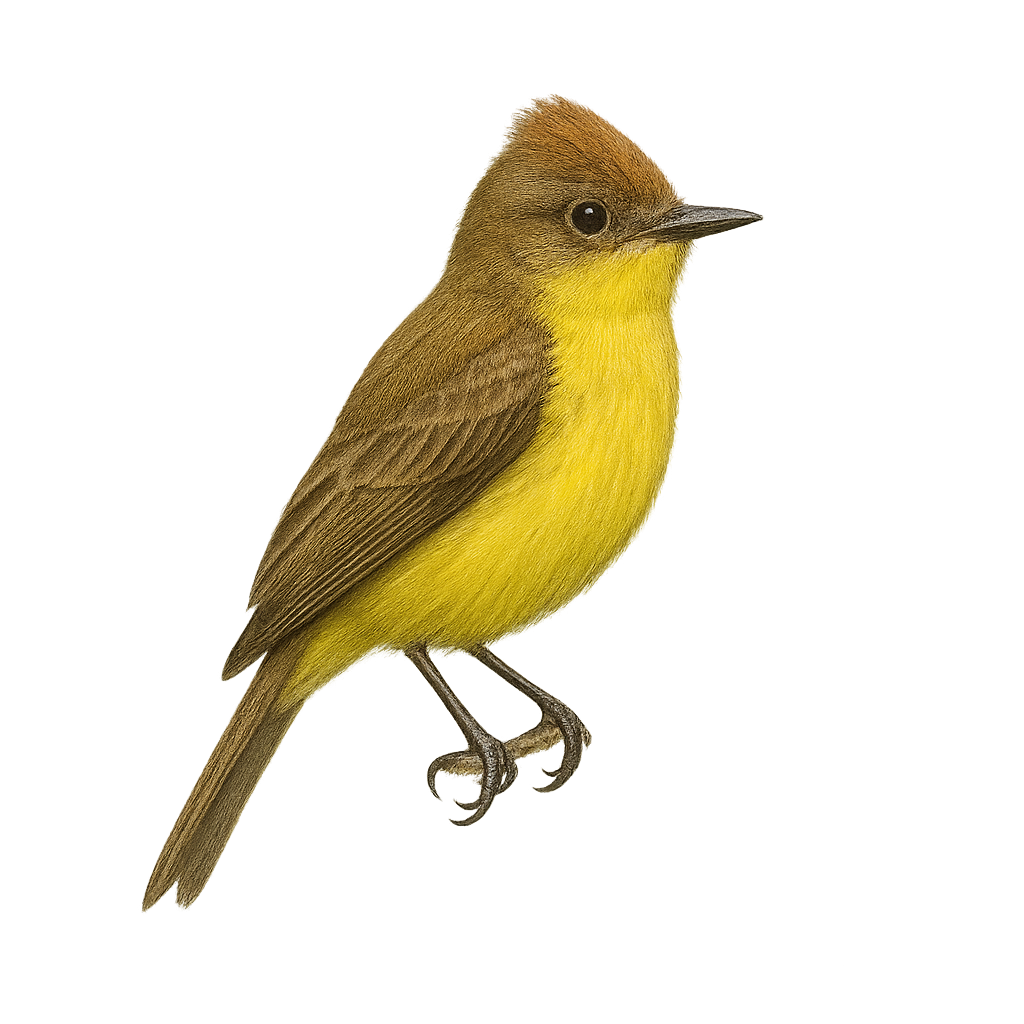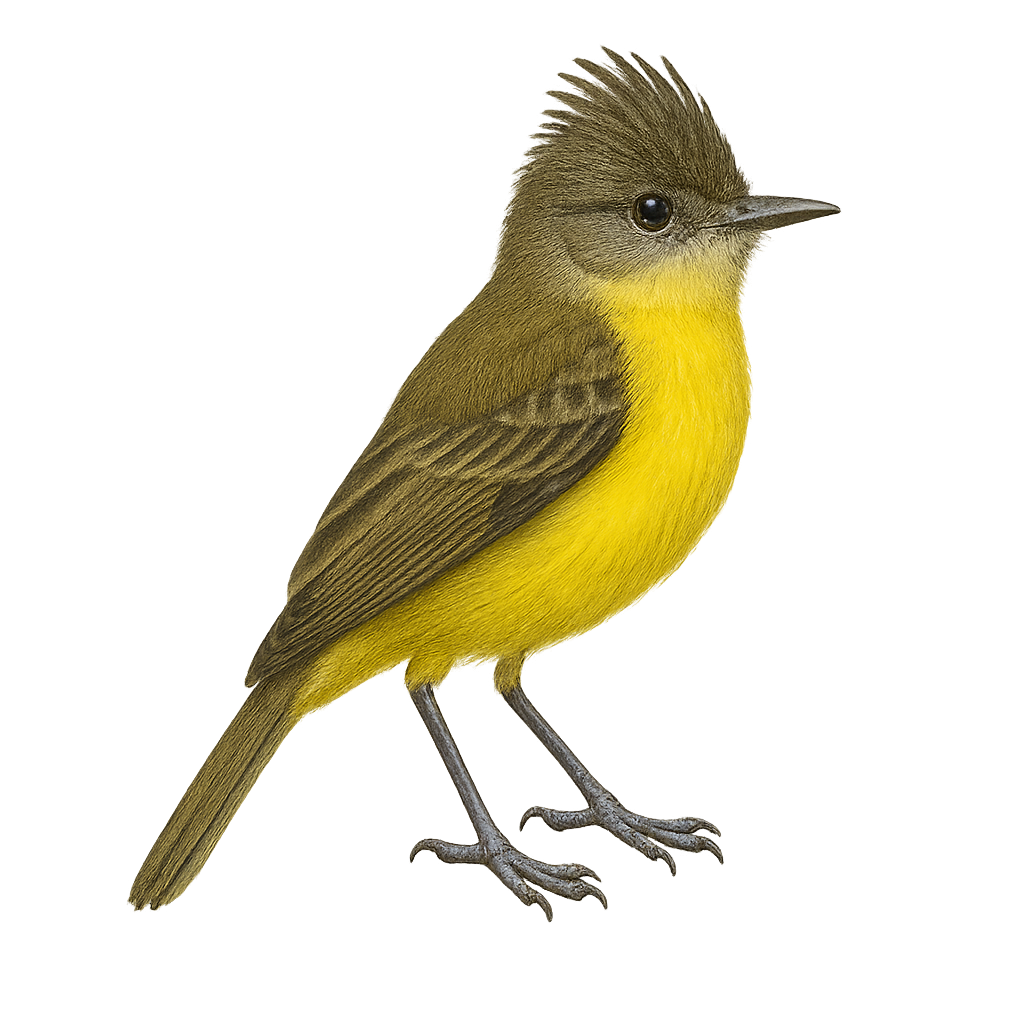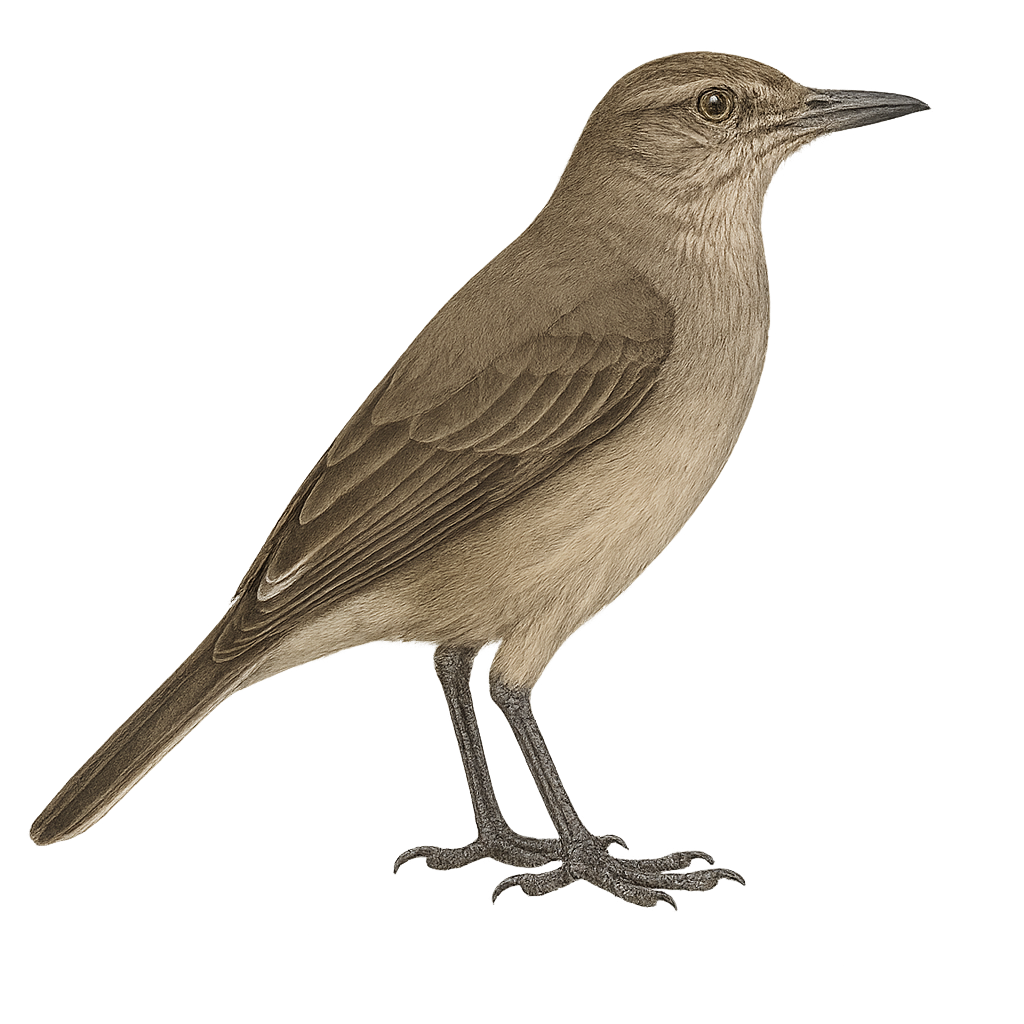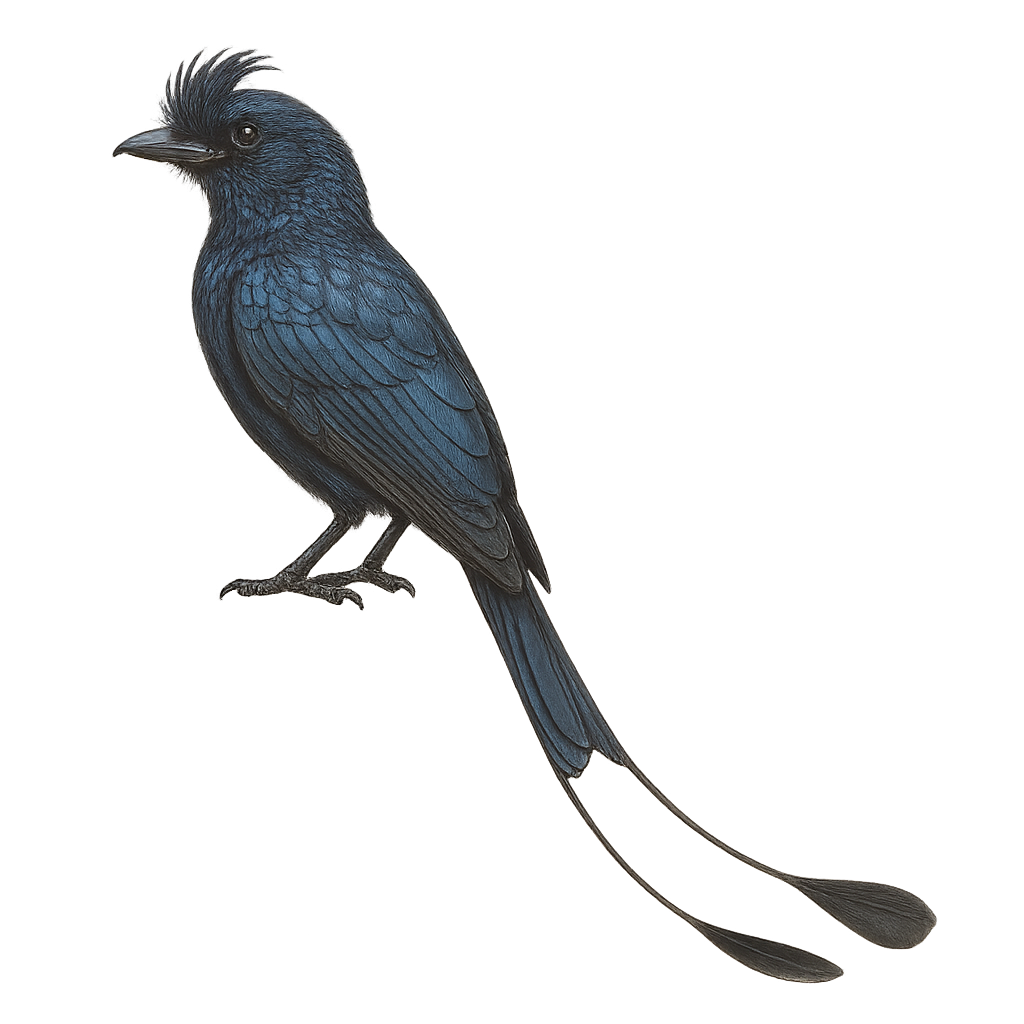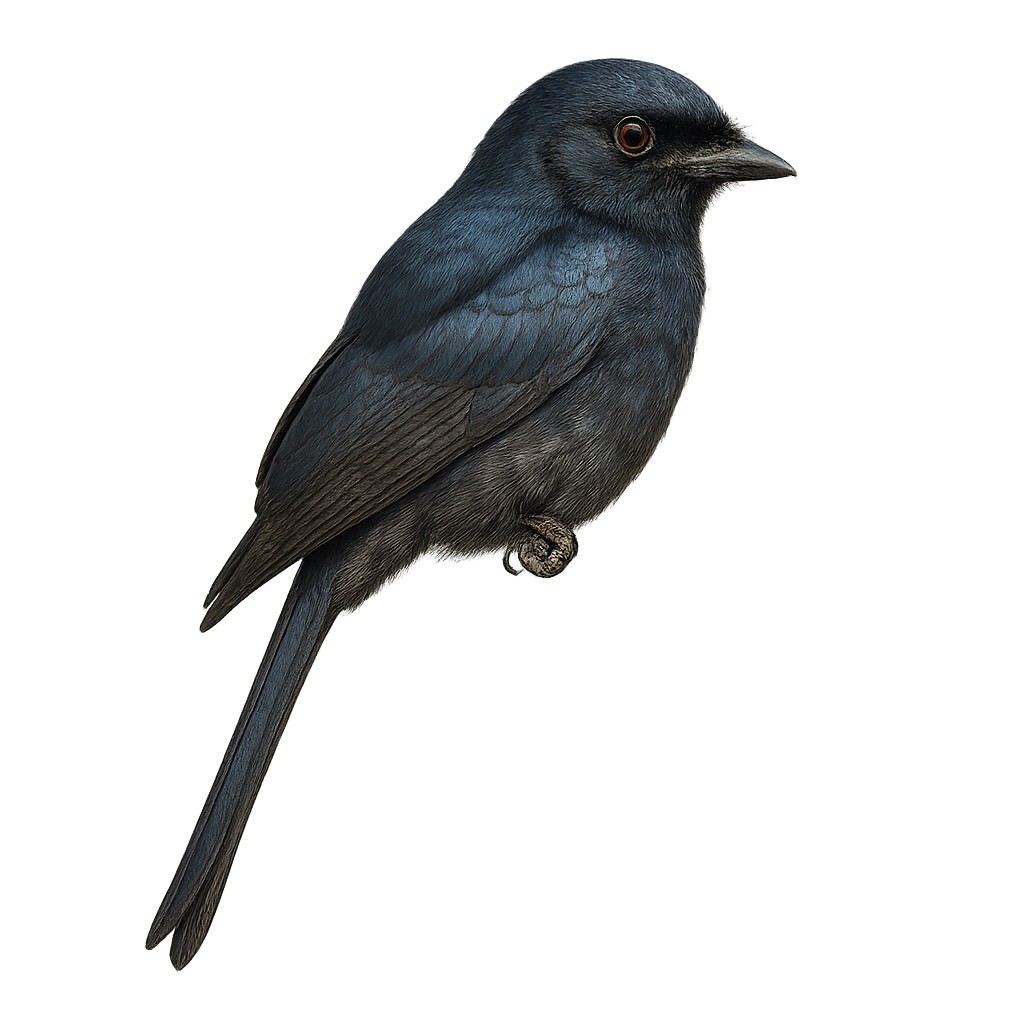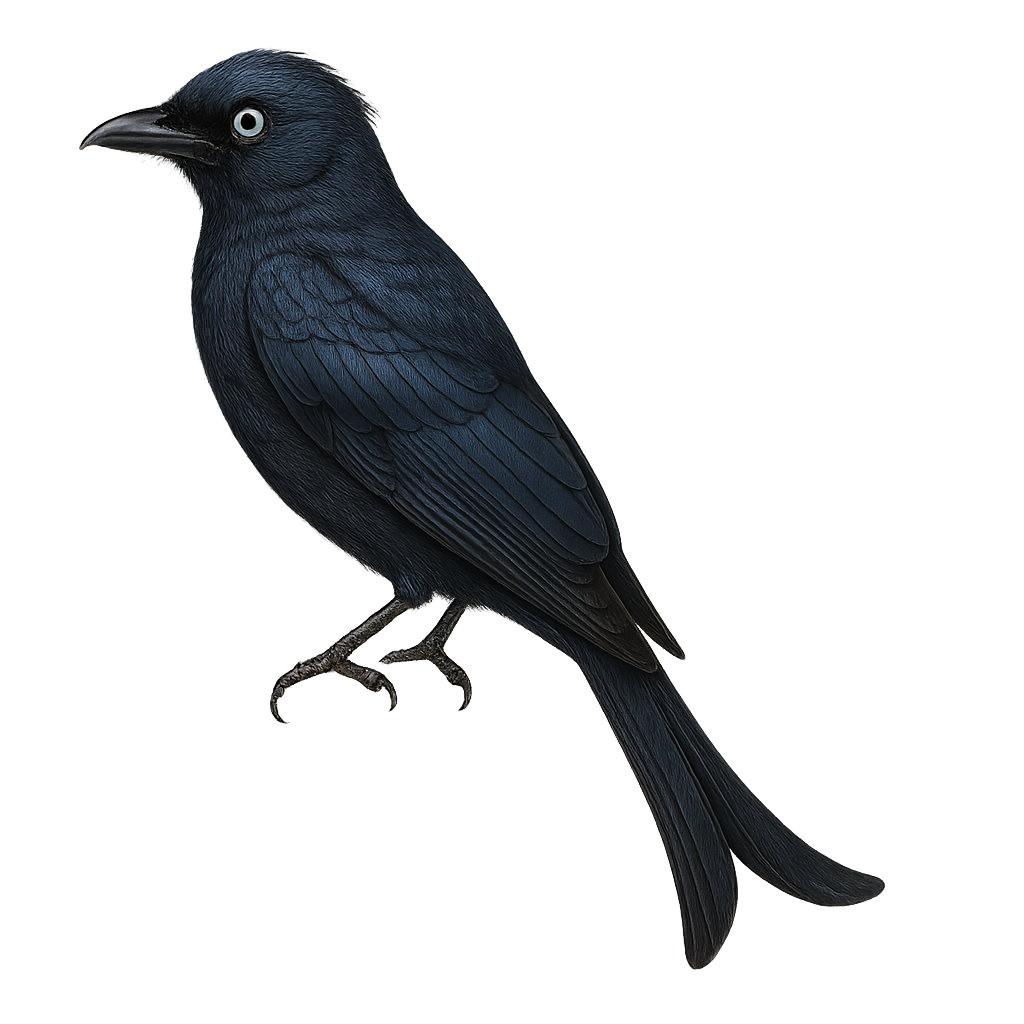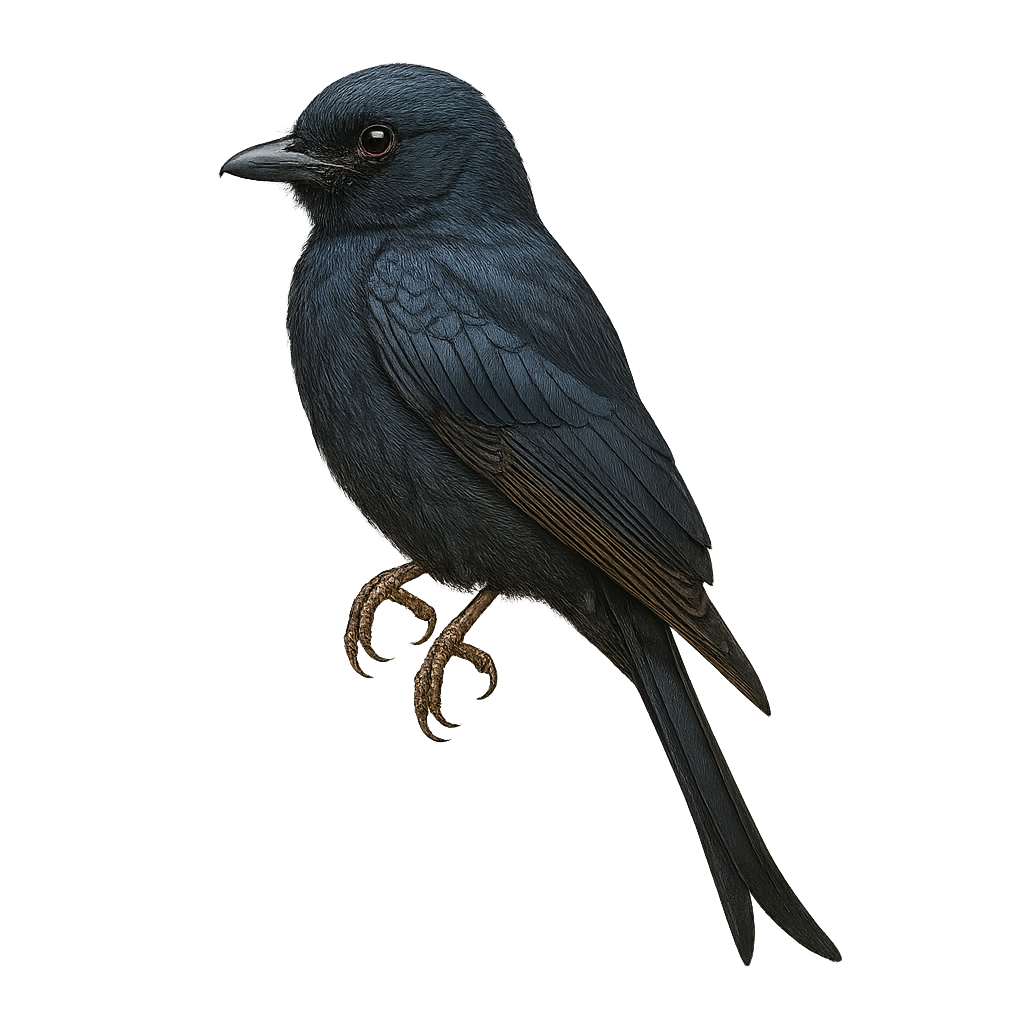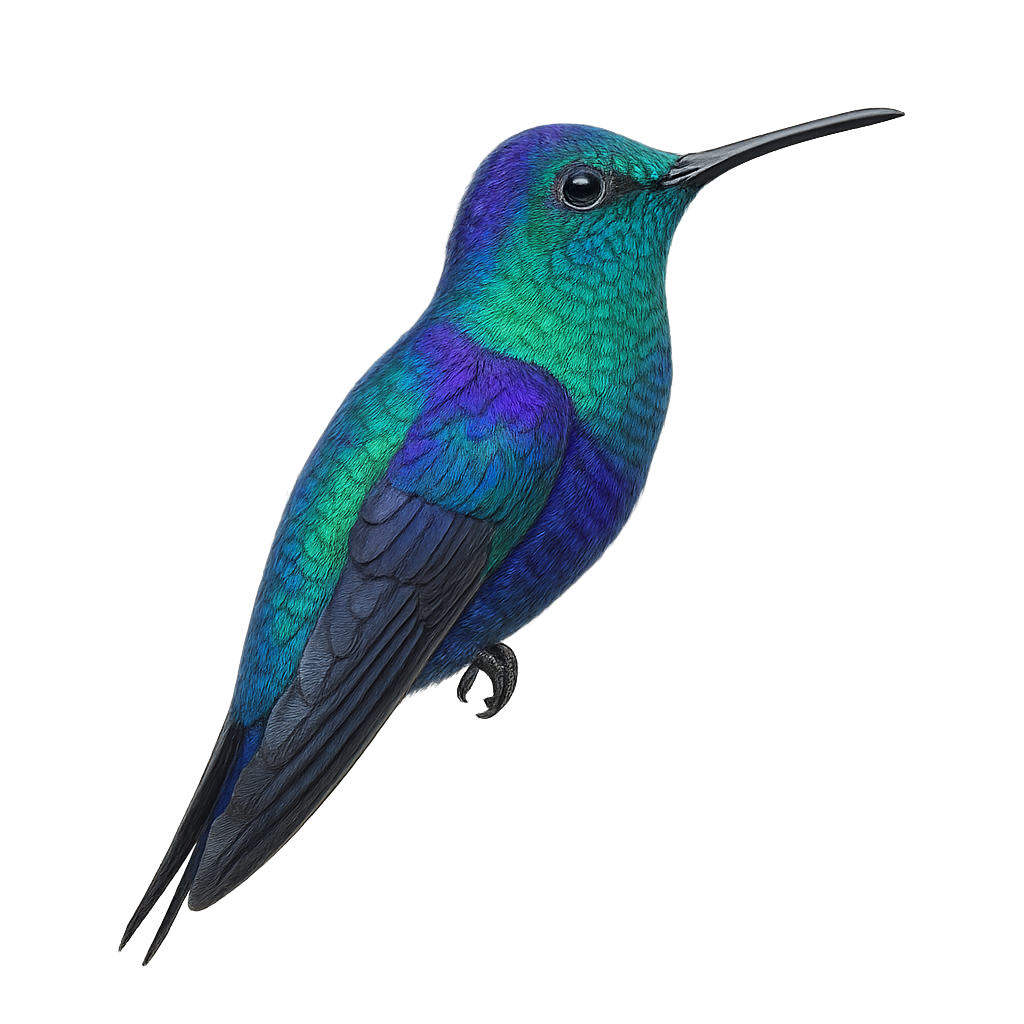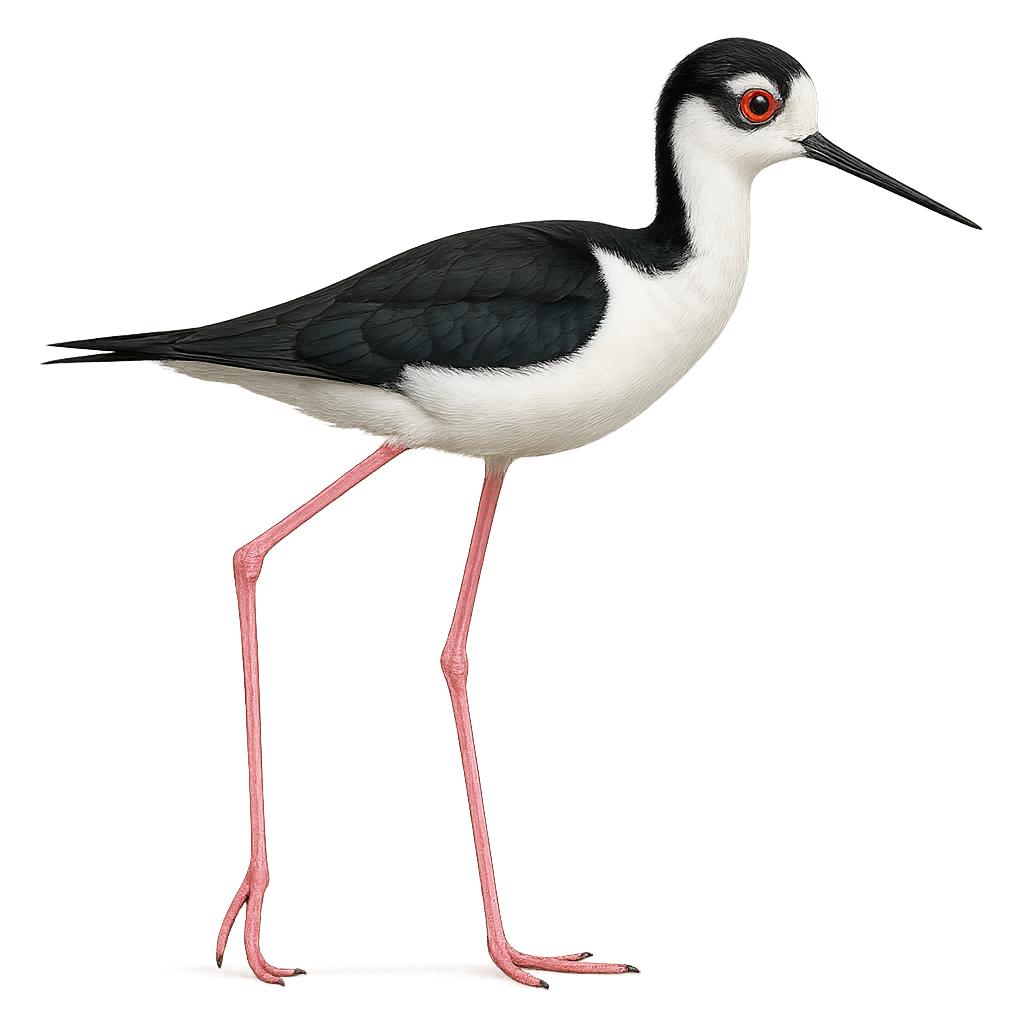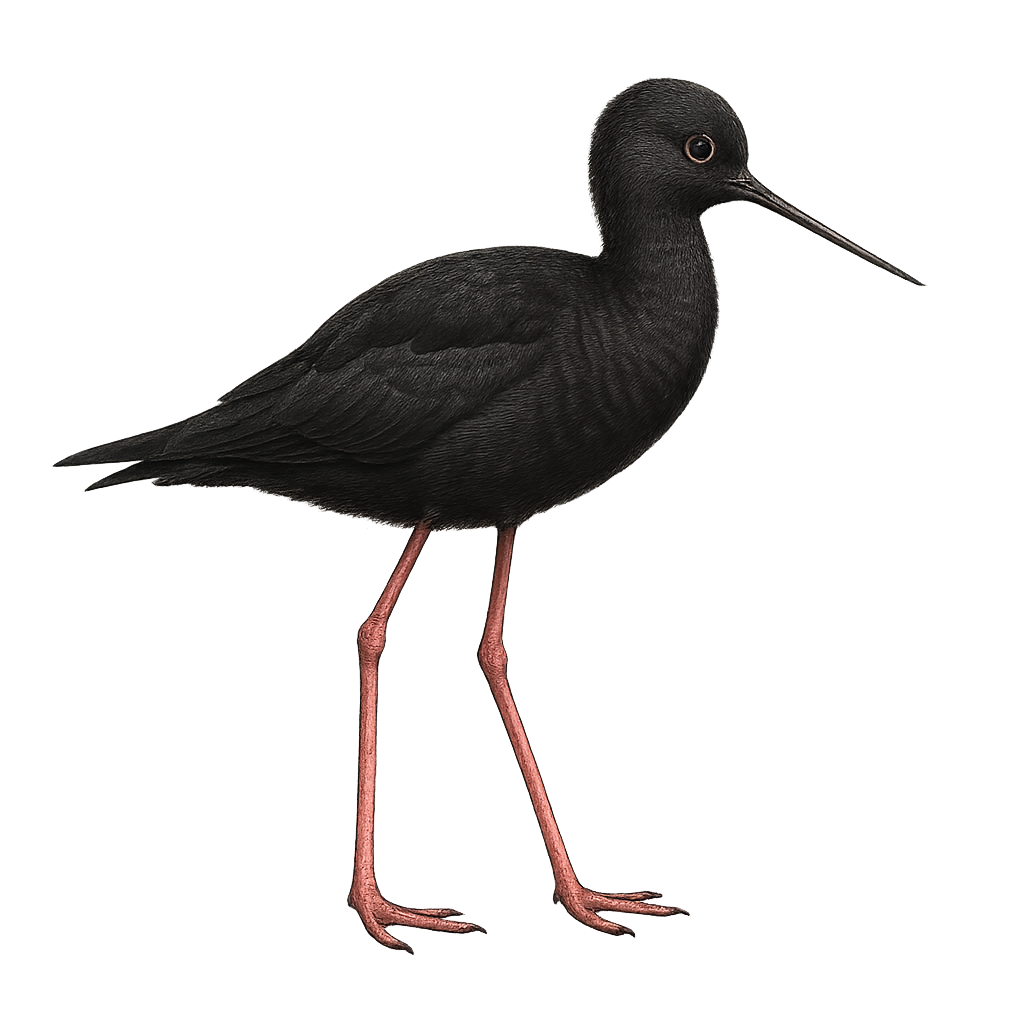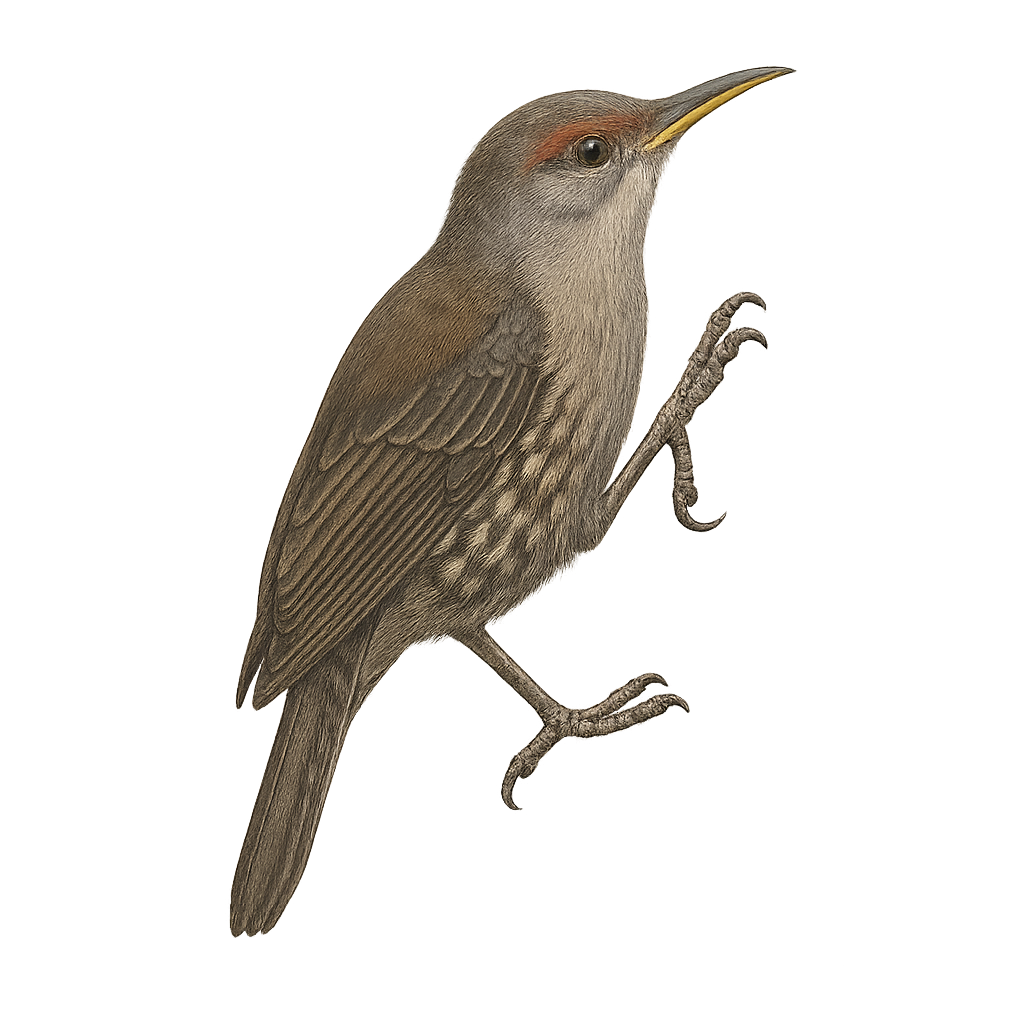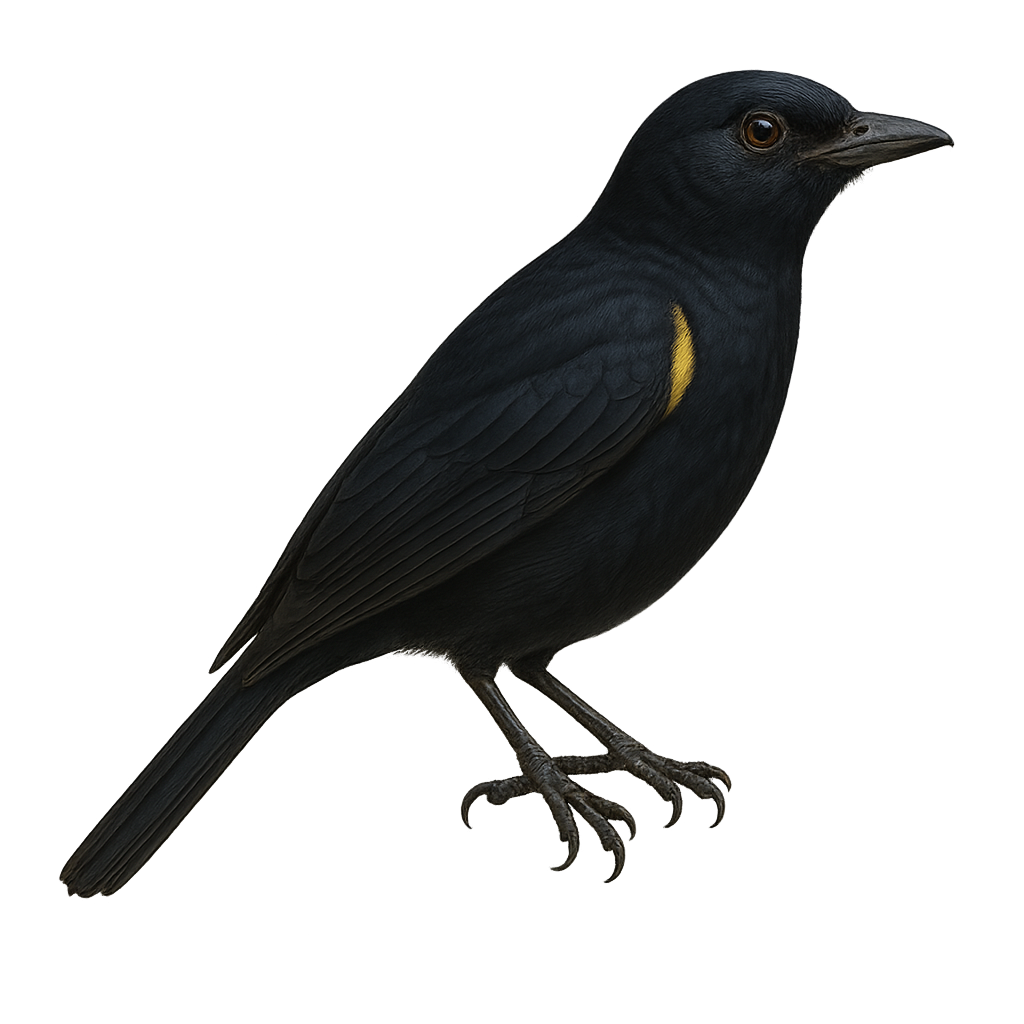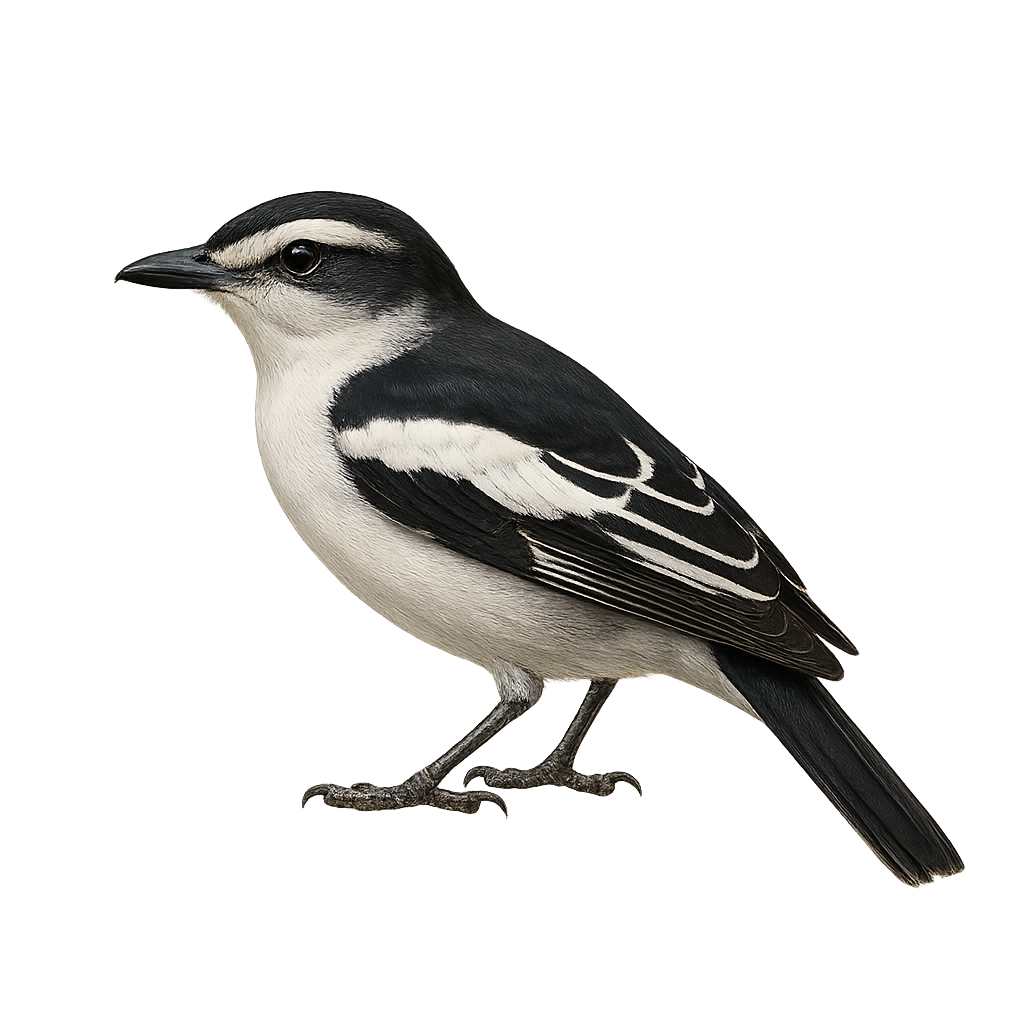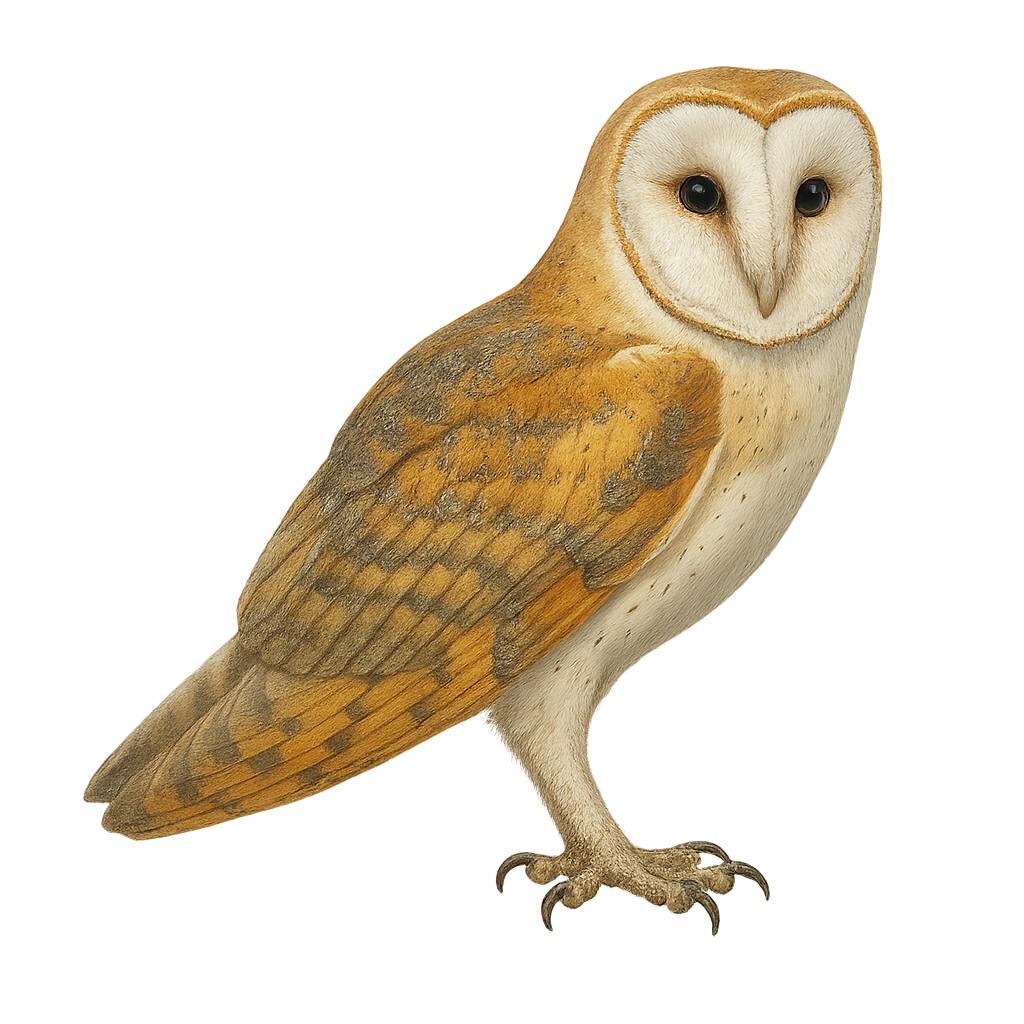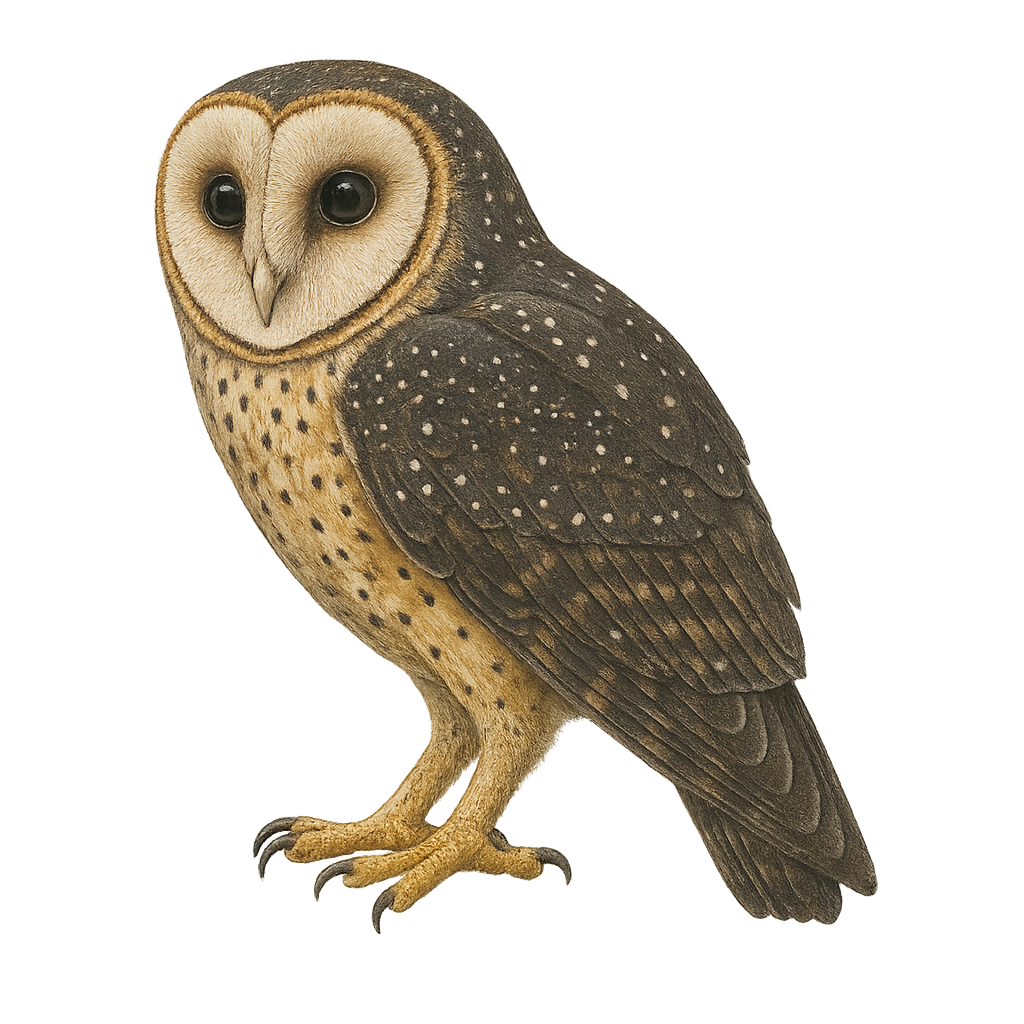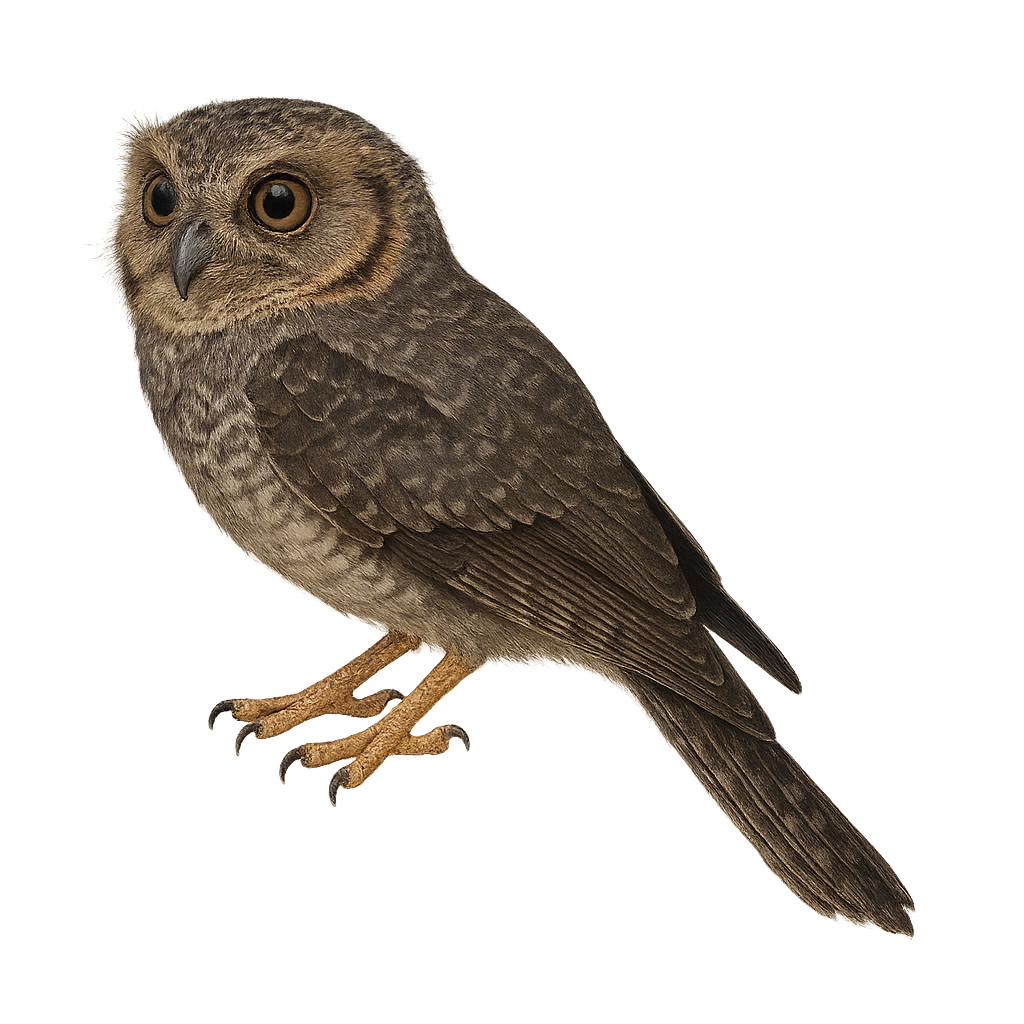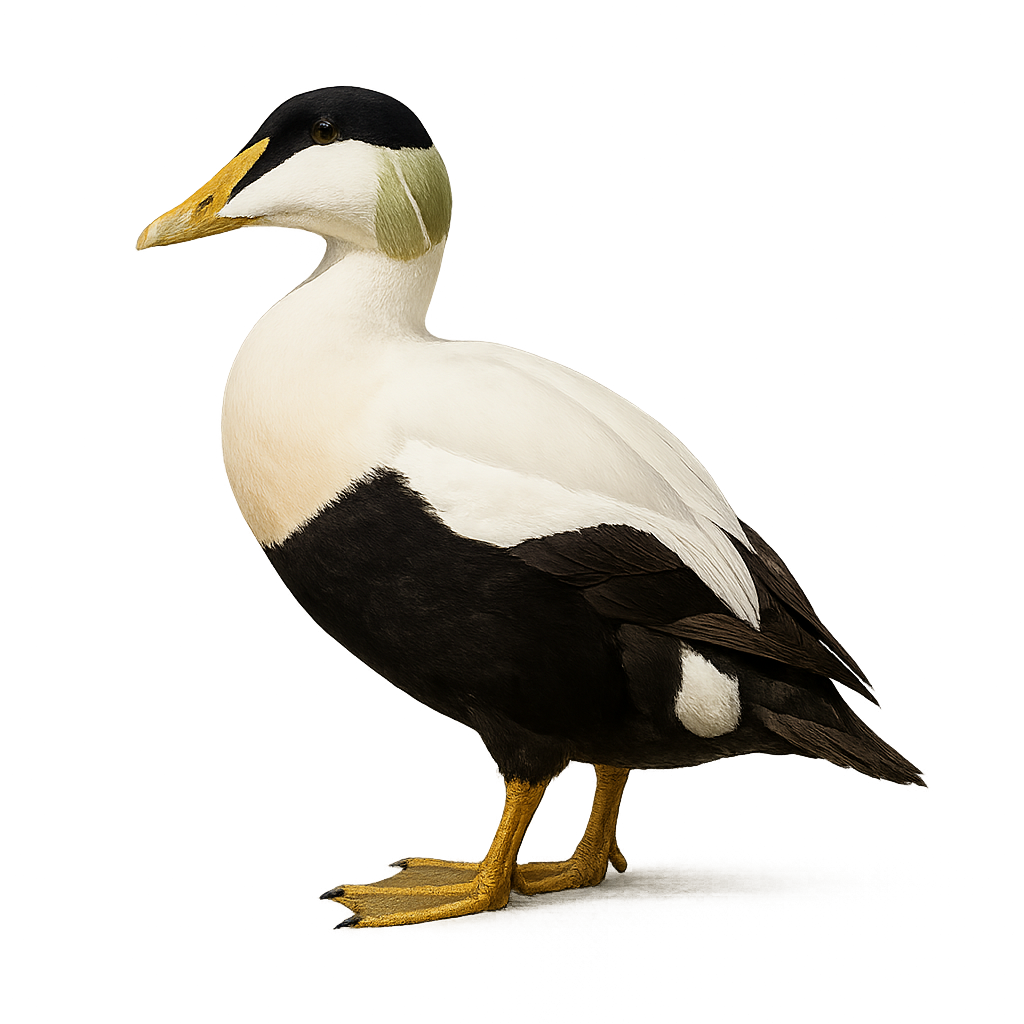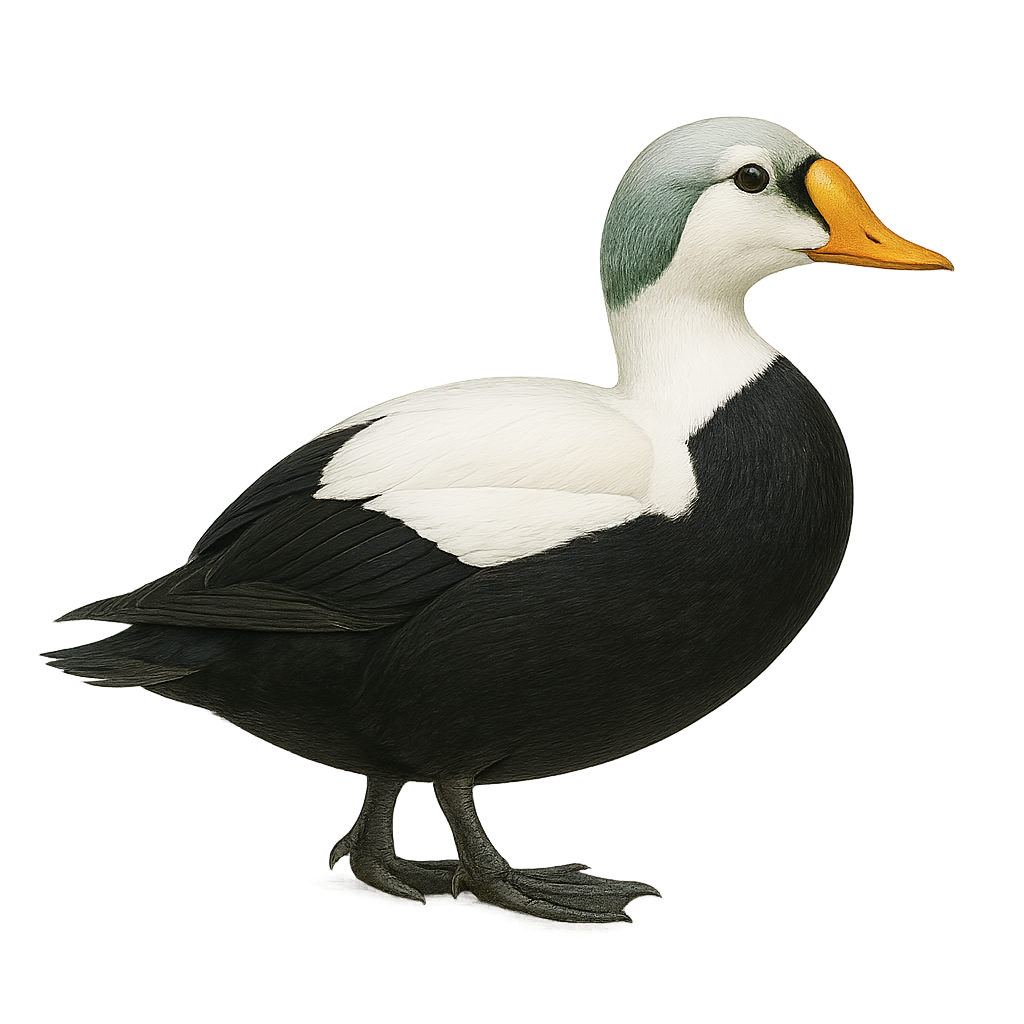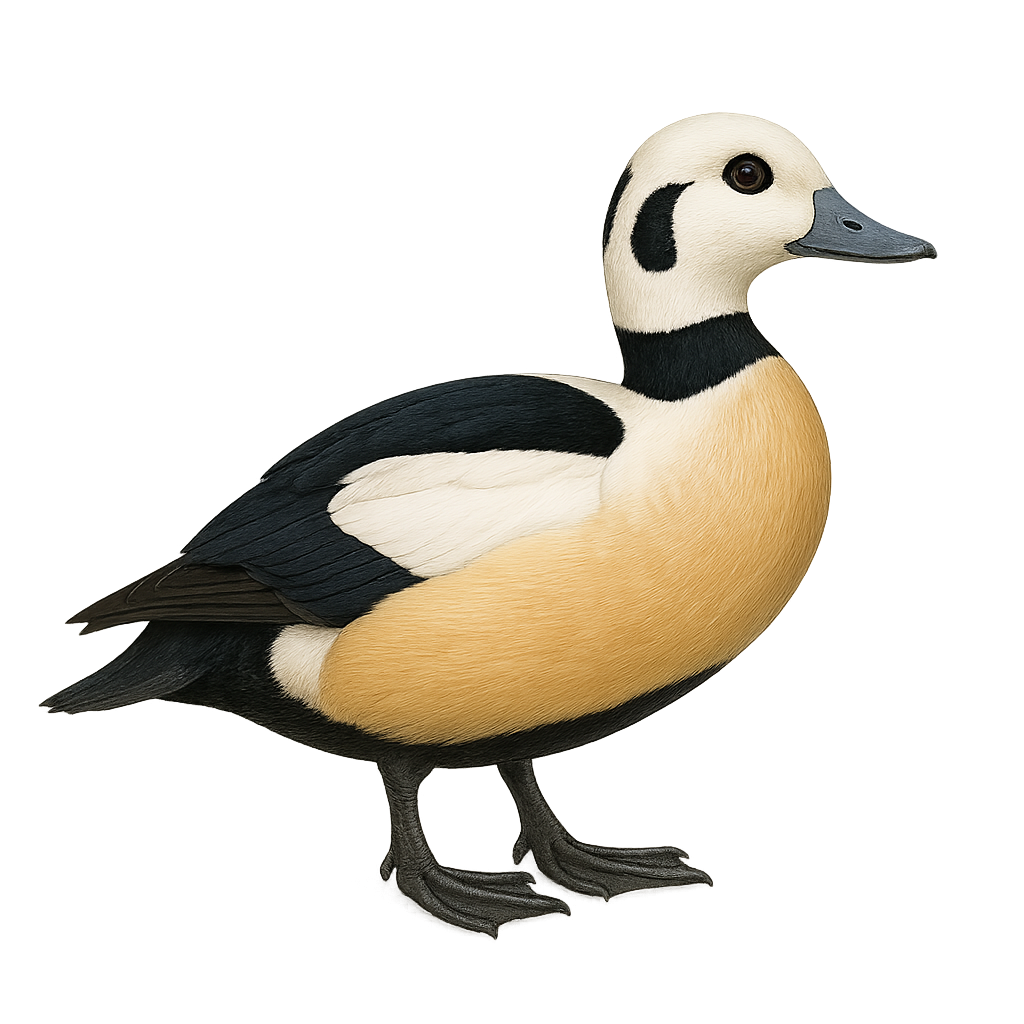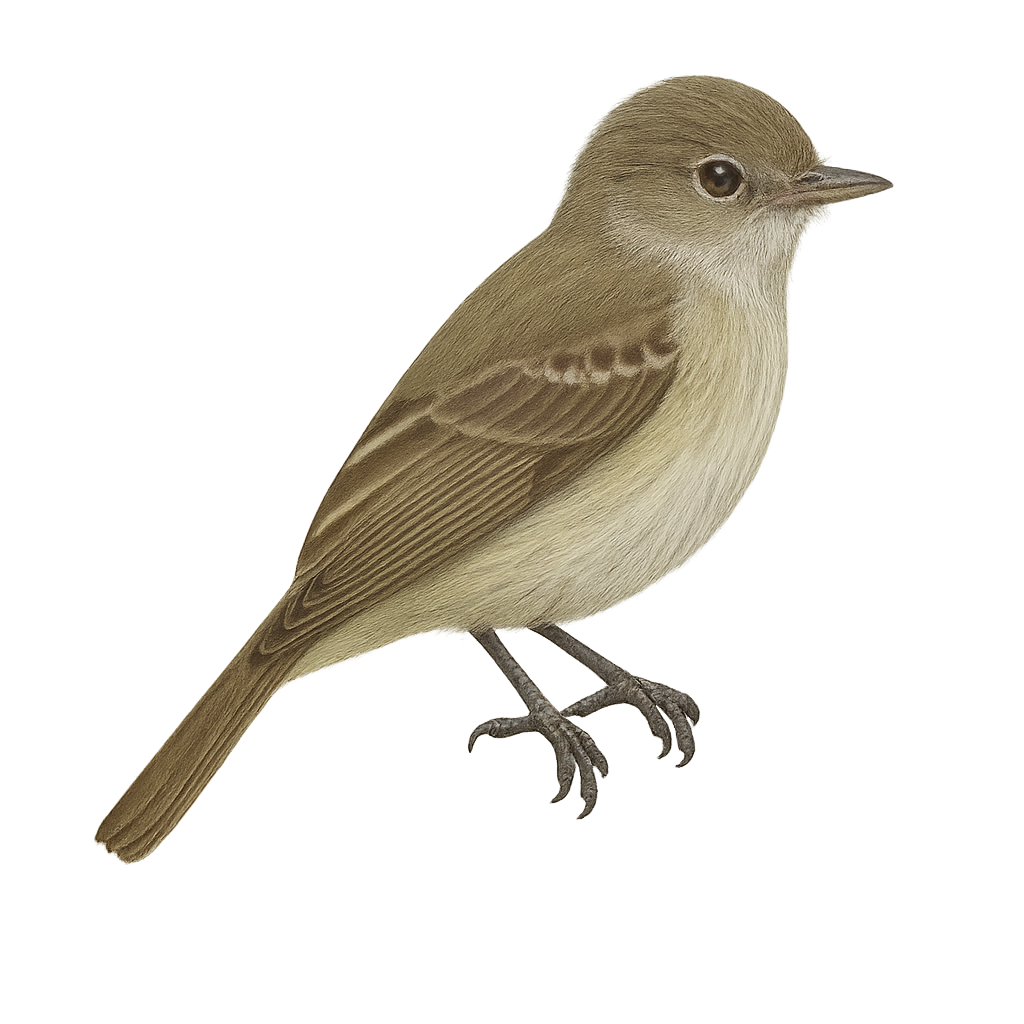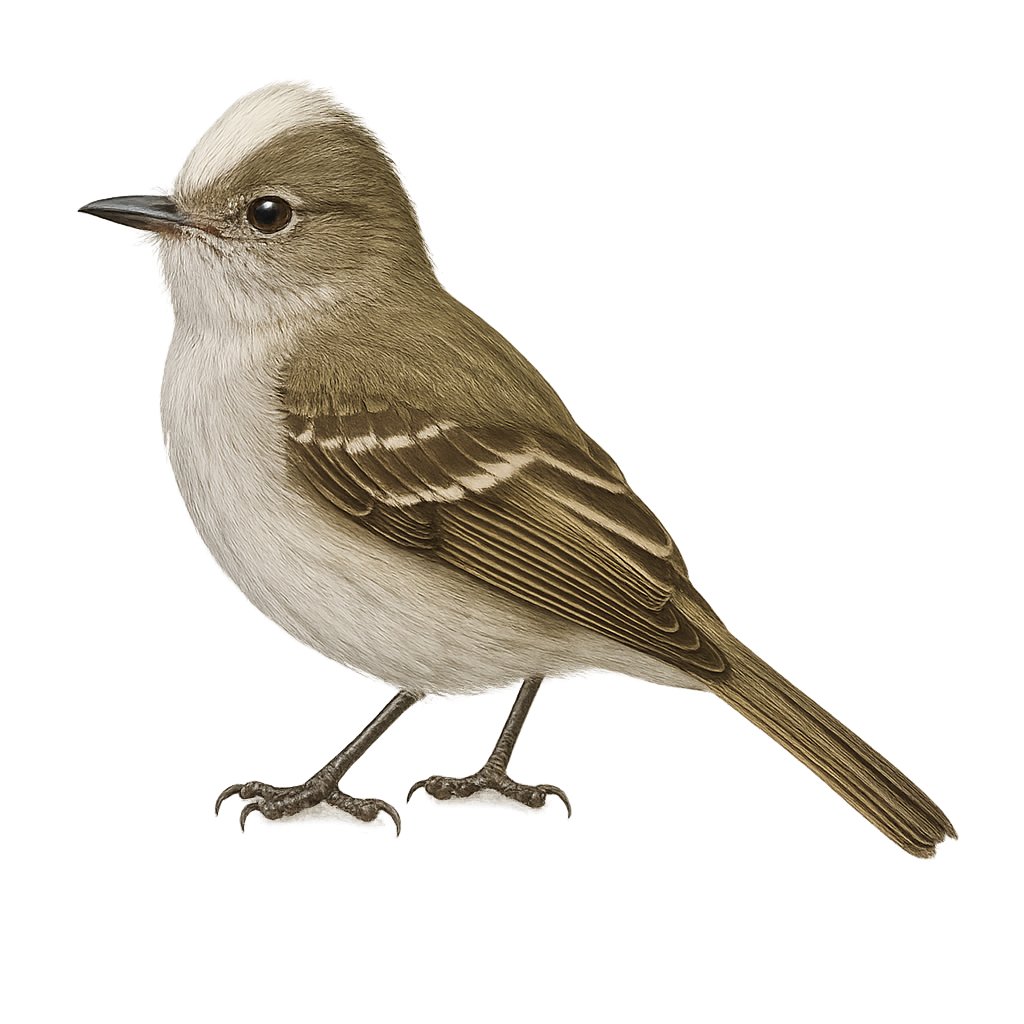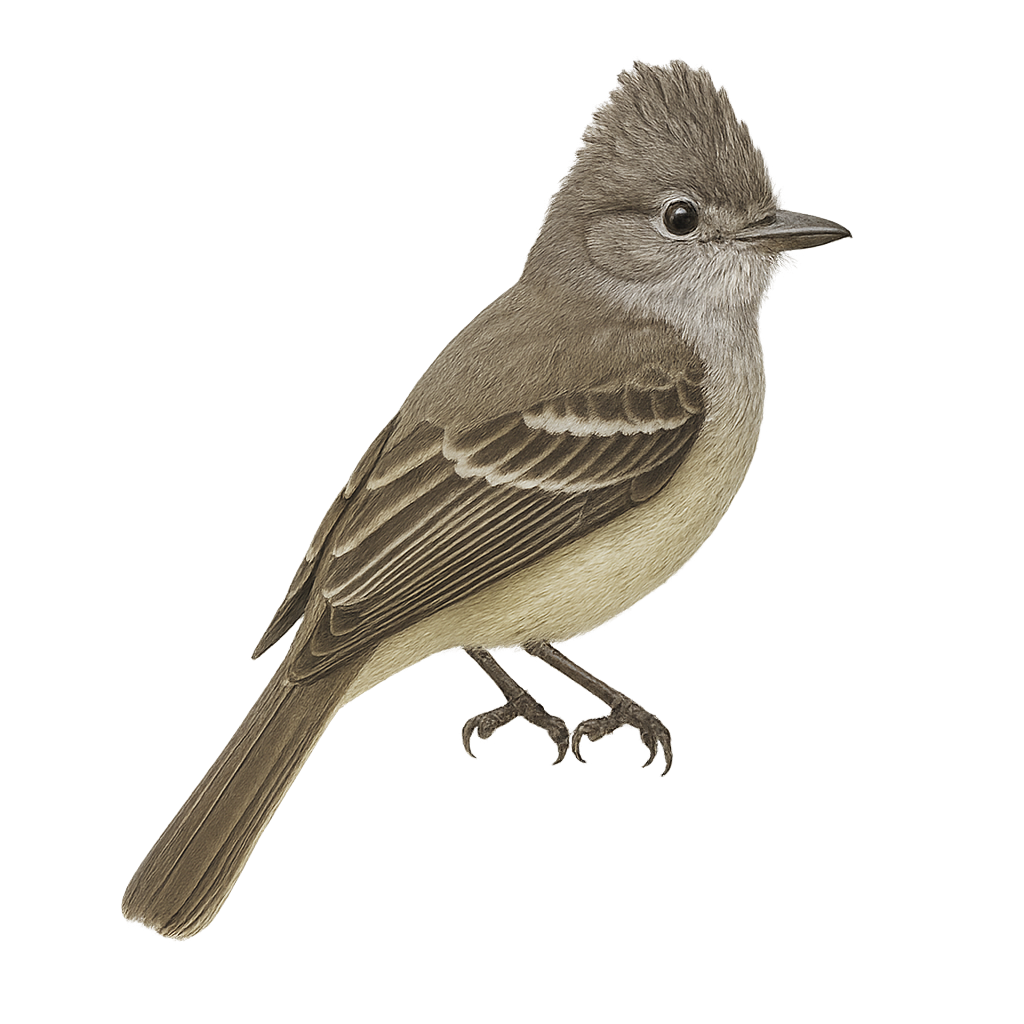The Plain Flowerpecker, scientifically known as Dicaeum concolor, is a small passerine bird belonging to the Dicaeidae family. It is primarily found in the tropical and subtropical regions of South and Southeast Asia, including India, Sri Lanka, Thailand, and Malaysia. This bird measures about 9 to 10 cm in length and is characterized by its modest plumage, usually gray-olive, which allows it to blend into its surroundings. The Plain Flowerpecker feeds mainly on small fruits, nectar, and insects, playing a crucial role in pollination and seed dispersal. It is often seen in small groups or pairs, actively moving through the forest canopy and gardens.
The Ocellated Turkey, Meleagris ocellata, is a species native to the tropical forests of the Yucatán Peninsula. It is known for its iridescent plumage with metallic hues and eye-like spots on its tail feathers. Males have a bright blue head with red and yellow caruncles. Smaller than the North American Wild Turkey, it is omnivorous, feeding on seeds, fruits, insects, and small animals. The Ocellated Turkey is a social bird, often found in small groups outside the breeding season. Its population is declining due to hunting and habitat loss.
The Sharp-winged Tyrannulet is a small passerine bird from the Tyrannidae family, known for its pointed wings and subtle plumage. It primarily inhabits wetlands and marshes in South America, especially in Argentina, Paraguay, and Uruguay. Its song is melodious, although it is often hard to spot due to its small size and discreet behavior. It mainly feeds on insects, catching them in flight or on leaves. The breeding season varies by region but typically occurs in spring. Nests are often built in low shrubs, hidden from predators.
The Yellow-bellied Tyrannulet is a small passerine bird belonging to the Tyrannidae family. It is characterized by its bright yellow belly, contrasting with an olive-brown back. This bird is primarily found in the wetlands and marshes of South America, particularly in Argentina, Brazil, and Uruguay. It is often seen moving nimbly among reeds and bushes, searching for insects and small invertebrates. Although its song is subtle, it plays a crucial role in communication between individuals, especially during the breeding season. Despite its small size, it is an important player in its ecosystem, contributing to the regulation of insect populations.
The Pseudocolopteryx citreola, also known as the Yellowish Tyrannulet, is a small passerine bird belonging to the Tyrannidae family. It is primarily found in the wetlands and marshes of South America, particularly in Argentina, Brazil, and Uruguay. This bird is characterized by its bright yellow plumage on the belly and underparts, contrasting with darker wings and back. It is often seen moving swiftly through dense vegetation, searching for insects and small invertebrates. Although relatively discreet, its melodious and repetitive song makes it easily identifiable for birdwatching enthusiasts.
The Sclater's Tyrannulet is a small passerine bird belonging to the Tyrannidae family. It is primarily found in the wetlands and marshes of South America, particularly in Argentina, Bolivia, and Paraguay. This bird is characterized by its olive-brown plumage, with lighter shades on the belly and slightly striped wings. Its modest size and discreet behavior sometimes make it difficult to spot. It primarily feeds on insects, which it catches in flight or on vegetation. The Sclater's Tyrannulet is known for its melodious songs, often heard at dawn. Although not considered threatened, habitat degradation could pose long-term risks.
The Mountain Shrike-Tyrant, or Agriornis montanus, is a medium-sized bird belonging to the Tyrannidae family. It is primarily found in the mountainous regions of South America, particularly in the Andes. This bird is characterized by its gray-brown plumage, with lighter shades on the belly and slightly darker wings. It has a sturdy beak, adapted to its diet mainly consisting of insects and small invertebrates. The Mountain Shrike-Tyrant is often seen perched on branches or rocks, from where it monitors its territory. Its song is discreet but plays an important role in communication between individuals. Although relatively tolerant of human presence, it prefers less frequented areas.
The Greater Racket-tailed Drongo, or Dicrurus paradiseus, is a striking bird known for its long tail feathers shaped like rackets. It is predominantly black with metallic blue and green sheen, and features a distinctive crest on its head. This bird is renowned for its intelligence and ability to mimic the sounds of other birds and animals. It inhabits the tropical and subtropical forests of South and Southeast Asia, where it primarily feeds on insects. The Greater Racket-tailed Drongo is often seen following groups of primates to catch insects disturbed by their movement. It is also territorial and can be aggressive towards intruders.
The Fork-tailed Drongo, Dicrurus adsimilis, is a medium-sized bird known for its glossy black plumage and distinctive forked tail. It is commonly found in open forests, savannas, and agricultural areas across sub-Saharan Africa. This drongo is noted for its bold and aggressive behavior, often attacking larger predators to defend its territory. It primarily feeds on insects but can also consume small vertebrates. Its varied and melodious song is often heard at dawn and dusk. The Fork-tailed Drongo is also famous for its ability to mimic the calls of other birds, allowing it to deceive competitors and steal their food.
The Nicobar Drongo, scientifically known as Dicrurus fuscipennis, is a medium-sized bird endemic to the Nicobar Islands in the Indian Ocean. It is characterized by its glossy black plumage and long forked tail. This bird primarily inhabits the tropical rainforests of these islands, where it feeds on insects and small invertebrates. The Nicobar Drongo is known for its territorial behavior and its ability to mimic the sounds of other birds, which helps it deceive predators and protect its territory. Although its habitat is limited, it is not currently considered threatened, but deforestation could pose a long-term risk.
The Black Drongo, Dicrurus macrocercus, is an elegant and agile bird, easily recognizable by its glossy black plumage and long forked tail. This passerine is widely distributed in South and Southeast Asia, where it inhabits various environments such as open fields, light forests, and agricultural areas. Known for its aggressive behavior, it does not hesitate to chase away larger predators to protect its territory. The Black Drongo is also an excellent mimic of sounds, allowing it to deceive other species. Its diet mainly consists of insects, which it catches in flight thanks to its remarkable aerial abilities.
The Crowned Woodnymph, or Thalurania colombica, is a vibrant hummingbird found primarily in the humid forests of Central and South America. This small bird, measuring about 9 to 11 cm, is known for its iridescent plumage. Males display a striking blue-violet head and throat, with a bright green back. Females, on the other hand, have more subdued green and gray tones. This hummingbird is a crucial pollinator, feeding mainly on nectar but also on small insects. It is often seen hovering near flowers, using its long bill to access nectar. Although its habitat is threatened by deforestation, it remains relatively common in protected areas.
The Black-winged Stilt is an elegant wader bird, easily recognized by its long, slender legs and bright white plumage. Measuring around 35 to 40 cm in length and with a wingspan of 70 to 80 cm, this bird is distinguished by its fine, straight black beak, which is slightly upturned. The Black-winged Stilt primarily inhabits wetlands, marshes, shallow rivers, and ponds across Europe, Asia, and North Africa. It mainly feeds on aquatic insects, crustaceans, and small fish, which it catches by walking in shallow water and probing with its beak. This wader is particularly known for its graceful way of moving on its long legs, often walking slowly in the water or performing elegant hops. During the breeding season, the Black-winged Stilt builds its nest on isolated islands or sandbanks, where females lay 3 to 4 eggs. The species is listed as of least concern, although it is vulnerable to habitat loss and water pollution.
The Black-necked Stilt is an elegant and graceful bird, easily recognizable by its long red legs and distinctive black and white plumage. It primarily inhabits wetlands, marshes, and shallow ponds where it feeds on small invertebrates and crustaceans. This bird is often seen in small groups but can also be solitary. Its slender silhouette and delicate movements make it a fascinating sight for birdwatchers and nature enthusiasts. Although its range is primarily in America, it is sometimes observed in other regions during migrations. Its ability to adapt to various wetland habitats makes it a resilient species, although some populations are threatened by habitat loss.
The Black Stilt, or Himantopus novaezelandiae, is a wading bird endemic to New Zealand. It is characterized by its uniform black plumage, long red legs, and slender black bill. This rare and endangered bird prefers aquatic habitats such as lakes, rivers, and marshes. Its population is declining due to predation by introduced species and habitat loss. Conservation efforts include protecting breeding sites and captive breeding programs. The Black Stilt is a symbol of New Zealand's unique biodiversity and the importance of conserving endangered species.
The Red-browed Treecreeper, or Climacteris erythrops, is a bird endemic to Australia, primarily found in eucalyptus forests. It is recognized by its reddish-brown plumage and distinctive red eyebrows. Measuring about 17 cm, it is often seen climbing tree trunks in search of insects and spiders. Its song is a melodious trill, often heard at dusk. Although discreet, it is sometimes observed in small family groups. Its ability to blend into its environment makes it difficult to spot, but its curious behavior and distinctive song are valuable clues for attentive observers.
The Black Cuckooshrike, or Campephaga flava, is a medium-sized bird, predominantly black with bluish sheen in males, while females have duller, often brownish, streaked plumage. It is mainly insectivorous, feeding on caterpillars and other insects found in trees and shrubs. This bird is often seen alone or in pairs and is known for its melodious and varied song. It primarily inhabits wooded savannas, open forests, and shrublands in sub-Saharan Africa. Although quite discreet, it can be spotted by its distinctive song.
The Black-winged Cuckooshrike is a medium-sized bird known for its distinctive grey and black plumage. It primarily inhabits tropical and subtropical forests, where it feeds on insects and fruits. This bird is often seen in small groups or pairs, actively moving through the canopy in search of food. Its ability to blend into its environment with its dark plumage sometimes makes it difficult to spot. Although not endangered, deforestation poses a potential risk to its natural habitats. It is appreciated by birdwatchers for its melodious song and discreet presence.
The American Barn Owl, or Tyto furcata pratincola, is a medium-sized nocturnal raptor, easily identified by its heart-shaped facial disc and pale plumage. It is widespread across the Americas and inhabits farmland, open grasslands, wetlands, and man-made structures like barns and silos. Its flight is completely silent, making it an efficient hunter of small mammals, especially rodents. Its sharp, screeching call contrasts with its ghostly appearance. The population is generally stable but may be affected by the loss of nesting sites and pesticide use. No black or melanistic form is known in this subspecies.
The Barn Owl is a nocturnal bird of prey, easily recognizable by its heart-shaped face and large white wings. It typically measures between 33 and 40 cm in length, with a wingspan of 80 to 95 cm. Its plumage is mainly white with beige and brownish hues on its back, while its face, with its distinct shape, is a bright white, making it immediately identifiable. The Barn Owl primarily inhabits agricultural areas, open meadows, clear forests, and abandoned buildings or churches, where it finds places to nest. It primarily feeds on small mammals, such as mice and voles, but may also hunt birds or insects. Its hunting method is very silent, due to the unique structure of its feathers, which reduce flight noise. It is a solitary bird that usually hunts at night. While the Barn Owl is not currently endangered, it faces threats such as habitat loss, secondary poisoning from consuming contaminated prey, and collisions with vehicles.
The Masked Owl, or Tyto novaehollandiae, is a medium-sized nocturnal bird of prey native to Australia and some surrounding islands. It is characterized by its heart-shaped facial disc, often white or cream, bordered by a dark edge. Its plumage is generally brown with white spots, allowing it to blend effectively into its natural habitat. It primarily inhabits forests, open woodlands, and agricultural areas but can also be found in urban zones. A nocturnal hunter, it feeds mainly on small mammals, birds, and insects. Although its conservation status is concerning in some areas, it remains relatively widespread.
The Australian Owlet-nightjar is a small, nocturnal bird belonging to the Aegothelidae family. It is identifiable by its grey-brown plumage, distinctive white eyebrows, and large eyes adapted for night vision. This bird is primarily endemic to Australia, inhabiting various forest types, including eucalyptus forests and open woodlands. It feeds mainly on insects, which it catches in flight or by foraging through foliage. The Australian Owlet-nightjar is known for its melodious song and varied calls, often heard at dusk and dawn. Although discreet, it is sometimes observed perched at the entrance of tree cavities, where it nests and rests during the day.
The Eider Duck is a large sea duck, easily recognized by its distinctive plumage. The adult male has a white body with a black head and neck, while the female is more muted with a brown speckled plumage. The Eider measures about 55 to 70 cm in length, with a wingspan of 100 to 125 cm, and weighs between 1.5 and 2.5 kg. It is primarily found in coastal regions of the North Atlantic, notably in Northern Europe, Canada, and Alaska. This duck primarily feeds on mollusks, crustaceans, and small fish, which it finds by diving underwater. It is also known for its social behavior, often living in large colonies during the breeding season. The Eider Duck is particularly famous for its down, a soft and insulating material harvested from the female's nests after laying, used to make luxury duvets and pillows. While the species is not immediately endangered, it is threatened by marine pollution, habitat loss due to coastal urbanization, and hunting.
The Spectacled Eider (Somateria fischeri) is a striking sea duck found in Arctic regions, especially along the coasts of Alaska and eastern Siberia. This medium-sized duck is named for the distinctive black "spectacle" markings around the male's eyes, set against a pale cream head, with a greenish nape and bright orange bill. The female is more subdued in appearance, with a uniform brown plumage that blends well into coastal surroundings. Spectacled Eiders are typically seen in small groups, diving in shallow waters for mollusks, crustaceans, and sea urchins. Though rare and considered vulnerable, this unique bird captivates those lucky enough to spot it in the wild.
The King Eider, Somateria spectabilis, is a striking sea duck known for its distinctive plumage and lifestyle. The male boasts a colorful head with shades of blue, green, and orange, while the female has a more subdued brown plumage, ideal for nesting. These birds breed in Arctic and subarctic regions, often on remote coasts and islands. They primarily feed on mollusks and crustaceans, diving to capture them in cold waters. In winter, they migrate to more temperate areas, forming large flocks on coastal waters. Their social behavior is fascinating, with elaborate courtship displays and distinctive vocalizations.
The Steller's Eider is a distinctive sea duck known for its striking plumage and migratory habits. Males display a striking breeding plumage with a white head, black eye patches, and a brown and black body. Females are more subdued, primarily brown, allowing them to blend into their natural habitat. These birds breed in the Arctic regions of Russia and Alaska, often nesting near lakes and rivers. In winter, they migrate to more temperate coasts, where they primarily feed on mollusks and crustaceans. The Steller's Eider is a vulnerable species, threatened by habitat loss and climate change.
The Small-billed Elaenia is a small passerine bird belonging to the Tyrannidae family. It is primarily found in South America, especially in wooded areas and savannas. This bird is characterized by its olive-gray plumage on the back and lighter underparts, as well as its relatively short bill, which gives it its name. Small-billed Elaenias are often seen feeding on insects and fruits, which they catch in flight or on branches. Their song is a key element of their communication, often described as a soft and melodious whistle. Although generally discreet, they can be observed in small groups or pairs.
The White-crested Elaenia is a small passerine bird belonging to the Tyrannidae family. It is recognizable by its distinctive white crest on the head, contrasting with its gray-green plumage. This bird is widely distributed in South America, inhabiting various environments from tropical forests to shrublands. Known for its melodious voice and varied songs, the elaenia primarily feeds on insects and fruits, which it captures in flight or by foraging through foliage. It is often observed in small groups or pairs, especially during the breeding season. Its adaptability to different environments makes it a resilient species, although some populations may be affected by deforestation.
The Grey-capped Flycatcher is a small passerine bird belonging to the Tyrannidae family. It is primarily found in the tropical and subtropical forests of Central and South America. This bird is characterized by its grey head, white belly, and greenish wings. It is often seen catching insects in flight, thanks to its agile and swift movements. Although discreet, its melodious song can be heard throughout the canopy. The Grey-capped Flycatcher plays an important role in the ecosystem by regulating insect populations and participating in the pollination of certain plants.
The Yellow-bellied Elaenia is a small passerine bird belonging to the Tyrannidae family. This bird is easily recognizable by its bright yellow belly contrasting with its dull olive back. It has a subtle crest and slightly white-striped wings. It is primarily found in tropical and subtropical forests but also adapts to open woodlands and savannas. Its song is distinctive, often described as a melodious whistle. The elaenia is a diurnal bird, active mainly in the morning and late afternoon. It feeds primarily on insects and fruits, which it captures in flight or by foraging through foliage.


